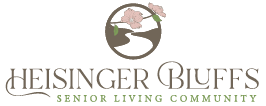Intergenerational Programs in Senior Living Communities

Intergenerational programs in senior living communities are creating new opportunities for meaningful connections between seniors and younger generations. These partnerships, often formed with schools, youth groups, or local organizations, provide unique benefits for both age groups, fostering a sense of purpose, understanding, and joy.
Let’s explore the impact of these programs, how they are implemented, and the lasting bonds they create between seniors and younger generations.
What Are Intergenerational Programs?
Intergenerational programs are structured activities designed to bring people of different age groups together for mutual benefit. These initiatives promote meaningful interactions and provide opportunities to share experiences, knowledge, and skills.
Common Examples of Intergenerational Programs:
- Mentorship Programs: Seniors mentor students in areas like history, music, or career development.
- Arts and Crafts Projects: Joint creative activities that encourage collaboration.
- Shared Reading Sessions: Children and seniors read together, improving literacy and fostering companionship.
- Community Service: Joint projects such as gardening or volunteering that contribute to the local community.
Why Intergenerational Programs Are Important
1. Building Emotional Connections
Intergenerational interactions combat loneliness and isolation among seniors, while providing younger participants with a sense of belonging and respect for older generations.
2. Promoting Mutual Learning
Seniors offer wisdom and life experiences, while younger generations bring fresh perspectives and technology skills. This exchange enriches both groups.
3. Strengthening Communities
These programs create a sense of community by bridging generational gaps and fostering understanding.
4. Improving Mental and Physical Health
Engaging in activities with youth boosts seniors’ cognitive functions and emotional well-being. Younger participants benefit from mentorship and the opportunity to develop empathy.
How Intergenerational Programs Work in Senior Living Communities
Collaborations with Schools and Youth Groups
Many senior living communities partner with local schools and youth organizations to organize regular visits and joint activities.
Volunteer Opportunities
High school students often volunteer in senior living communities, assisting with events and participating in shared projects.
Technology-Based Programs
Technology can also facilitate intergenerational connections. For example, students can teach seniors how to use smartphones, social media, or video calls to stay connected with family and friends.
Real-Life Success Stories
Case Study 1: A Music Exchange Program
In one senior living community, high school music students visited weekly to perform and learn from senior residents with musical backgrounds. This program led to collaborative performances and strengthened bonds between participants.
Case Study 2: Intergenerational Gardening
A community partnered with a local youth group to create a shared garden. Seniors shared their gardening knowledge, while children provided the physical labor. Together, they grew vegetables, which were used in communal meals.
The Benefits of Intergenerational Programs
For Seniors:
- Reduced Isolation: Social interactions brighten their days and provide a sense of purpose.
- Enhanced Cognitive Function: Stimulating conversations and activities keep their minds sharp.
- Joy and Energy: Spending time with younger generations brings vibrancy and joy.
For Younger Generations:
- Increased Empathy: Building relationships with seniors fosters respect and understanding.
- Knowledge Gained: They learn life lessons and skills from older mentors.
- Broadened Perspectives: Engaging with seniors expands their worldview.
For the Community:
- Stronger Social Bonds: These programs create a tighter-knit community.
- Cultural Preservation: Seniors share traditions and stories, preserving cultural heritage.
How Families Can Support Intergenerational Programs
Encourage Participation
Families can encourage seniors to join these programs by highlighting their benefits and accompanying them to initial sessions.
Share Talents
If you have children, suggest activities they can share with seniors, such as reading, drawing, or teaching technology skills.
Volunteer Together
Families can volunteer at senior living communities, participating in intergenerational activities and supporting these initiatives.
Tips for Successful Intergenerational Programs
1. Plan Activities Around Common Interests
Focus on activities that both age groups enjoy, such as music, art, or games.
2. Create Safe Spaces
Ensure activities take place in comfortable, accessible environments where both groups feel welcome.
3. Encourage Consistency
Regular interactions foster deeper relationships. Plan recurring events or visits.
4. Celebrate Achievements
Highlight milestones, such as collaborative projects completed together, to keep participants motivated.
Final Thoughts
At Heisinger Bluffs, we value the importance of intergenerational connections. Our partnerships with local schools and youth groups bring generations together through creative and enriching programs, fostering a vibrant community for all. Contact us today to learn more about our initiatives and how you can get involved.
Frequently Asked Questions
How do intergenerational programs benefit seniors and younger participants?
These programs help seniors combat loneliness and stay mentally active while teaching younger generations empathy, respect, and life skills.
What types of activities are common in intergenerational programs?
Popular activities include arts and crafts, reading sessions, gardening, mentorship, and technology lessons.
How can families support intergenerational programs?
Families can encourage seniors to participate, involve younger members in shared activities, and volunteer alongside their loved ones.











